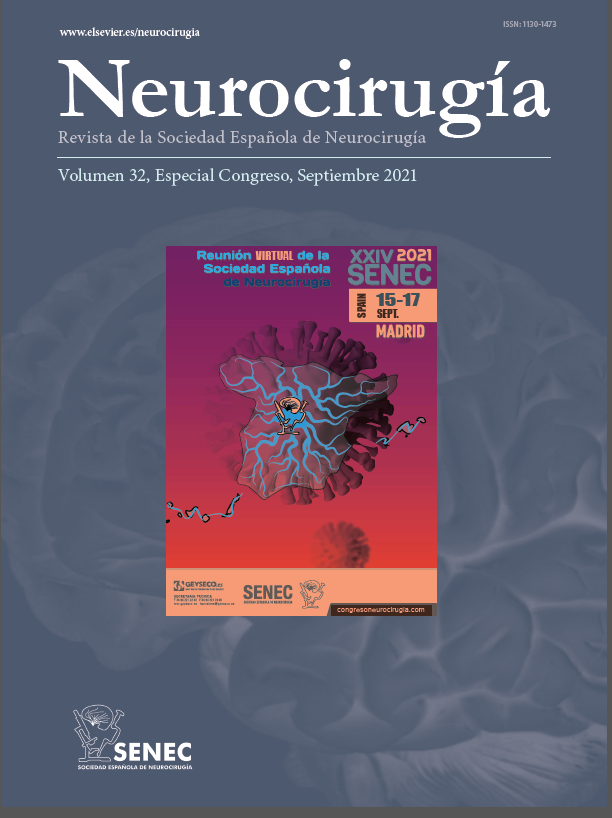C-0232 - 3D NAVIGATED BIOPSY FOR A VERTEBRAL LESION
Servicio de Neurocirugía, Hospital Universitario Marqués de Valdecilla, Santander, Spain. Servicio de Radiodiagnóstico, Hospital Universitario Marqués de Valdecilla, Santander, Spain.
Objectives: Describing the application of a successful biopsy modified technique by 3D intraoperative guided navigation, in cases where the conventional technique has failed.
Methods: A case of a 36-year-old female complaining of an intense lumbar back pain. Physical examination revealed no-neurological deficit. CT scan showed a T12 vertebral body osteolytic lesion. Spinal MRI revealed a solitary lesion of T12, affecting the vertebral body with extension to the epidural space, both pedicle, prevertebral surrounded soft tissues, bilateral costovertebral junctions, and vena cava infiltration [Type 5 according to Tomita classification and grade 1B for Bilsky epidural spinal cord compression classification]. In consequence, a percutaneous biopsy with fluoroscopic assistance was performed. The histopathological analysis reported non-conclusive results. A new biopsy was obtained assisted by CT radiological imaging, with non-malignancy evidence in the sample analysis. Therefore, a 3D navigated biopsy with O-armTM assistance was performed. The optimal targets, entry points and trajectories were planned through both pedicles in order to get multiple samples, including the epidural mass lesion and costovertebral junctions. Finally, the pathologists intraoperatively confirmed malignancy into the samples.
Results: After an uneventful postoperative course the patient was discharged with no complications. The final anatomopathological report diagnosed an Ewing-like sarcoma. Then, a first stage of Chemotherapy treatment was agreed by the multidisciplinary oncology committee at our hospital. The chemo-drugs were Ifosfamide/etoposide alternating with vincristine/doxorubicin/cyclophosphamide.
Conclusions: Traditionally, percutaneous biopsies for vertebral lesions have been performed by C-arm guidance with 69,2% of yield rate. The CT-guided biopsy increases the diagnosis yield up to 84,2%. Our navigated biopsy with O armTM assistance offers a 3D reconstruction surgical imaging and allows multiple target selection, even in difficult access areas as the epidural space To our knowledge, this case is the first navigated spine biopsy reported, that shows the neuronavigation like a powerful tool, especially when the traditional techniques failed.







